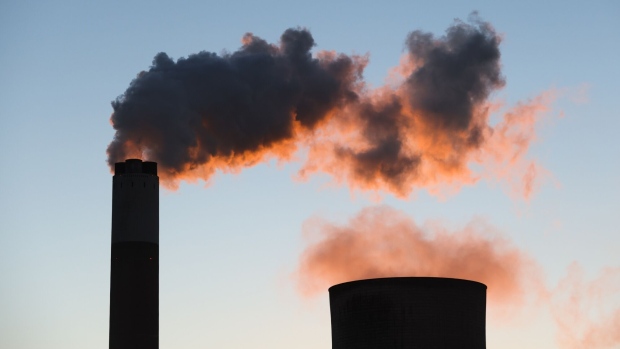Apr 16, 2024
The Architect of EU’s Carbon Market Says It’s Time to Allow Imported Credits
, Bloomberg News

(Bloomberg) -- The European Union should step up cooperation with third countries in its push to promote global carbon pricing through steps such as accepting some international carbon credits and facilitating mutual recognition of greenhouse gas markets, according to an architect of the bloc’s Emissions Trading System.
The bloc has so far taken a “low profile” in international discussions on creating a new, improved global framework for carbon credits, said Jos Delbeke, a former senior European Commission official, adding that it should consider the benefit they generate by bringing climate finance to poor nations. To create demand, Europe could set a number of imported credits that would be allowed to enter the 27-nation bloc in addition to already approved climate targets.
“Major attention needs to be given to avoiding a destabilization of the EU ETS market as carbon credits influence the overall cap,” Delbeke, now a professor at the European University Institute, said in an interview with Bloomberg. “The next crucial question is which type of carbon credits could be considered for inclusion in the EU.”
The EU agreed to deploy a carbon tax at its border and expand its emissions program into new sectors as part of its ambitious goal to reach climate neutrality by the middle of the century. The ETS, which imposes pollution caps on manufacturers, utilities, airlines and ships, has been closed to imported credits since 2020 amid concerns about oversupply and the environmental value.
The next option for the EU to decide whether to open up its cap-and-trade program for imports would be a revision of its climate legislation as part of setting targets for 2040. The commission, the bloc’s regulatory arm, has proposed a 90% emissions cut for the next decade, and plans for an adoption of the new goal in 2025. Detailed measures on how to achieve that would be issued in 2026.
“Clear criteria will have to be elaborated, including environmental and social minimum standards,” Delbeke said. “Carbon removals seem an obvious candidate for such a list, and the EU could develop an international dimension to its ongoing work on this issue, bilaterally or regionally.”
CBAM Targets
Another step that the EU could take to bolster its campaign would be to specify more details about how it intends to deploy the Carbon Border Adjustment Mechanism, which from 2026 will target steel, aluminum, cement, fertilizers, hydrogen and electricity sectors.
Under CBAM, importers will have to pay a price on pollution embedded in the goods brought into Europe, in line with costs of emissions in the ETS. The fee could be at least partially waived if a carbon levy has already been paid in the country where the goods were produced.
For the EU, CBAM could trigger a coalition of countries with carbon pricing, rendering the border levy ultimately redundant. But creating robust mechanisms to calculate the exact price to be waived under such a tax or linking varying emissions markets across the world could prove challenging and time-consuming.
“What is more realistic, however, is that countries mutually recognize each other’s ETS, without allowances and payments crossing the border,” Delbeke said. “Countries having established their ETS may seek a CBAM waiver from the EU for their exporters based on the argumentation that their climate policy efforts are mirroring the EU ETS.”
To further promote its global carbon pricing idea, the EU could also create early access for candidate countries to its ETS-based funds for greening up the economy in exchange for a gradual application of the carbon market, according to Delbeke. His other recommendations include defining further climate disclosure requirements for companies and financial institutions, particularly on the use of carbon credits and removals.
“The EU has the policy tools and the capability of bringing higher integrity to initiatives on carbon pricing in the world,” he said. “An ambitious outreach strategy on ETS, CBAM and carbon credits could help achieving a so-called Brussels effect on carbon pricing.”
©2024 Bloomberg L.P.






